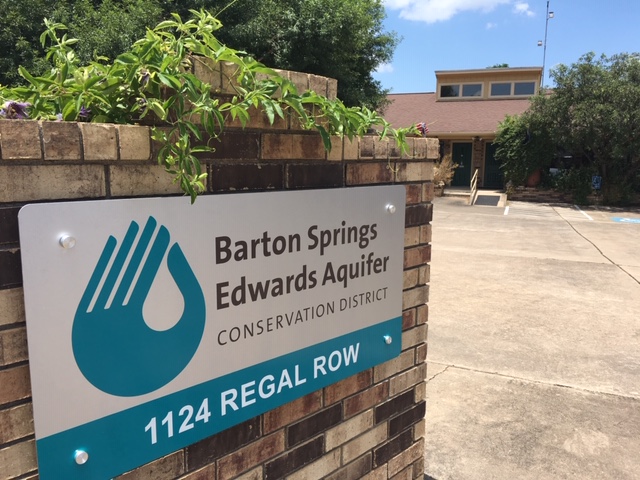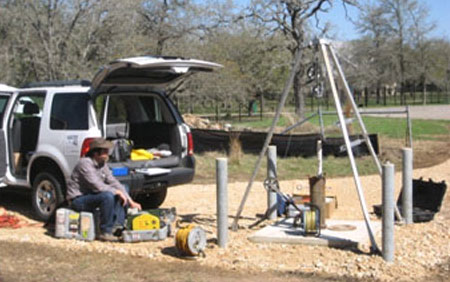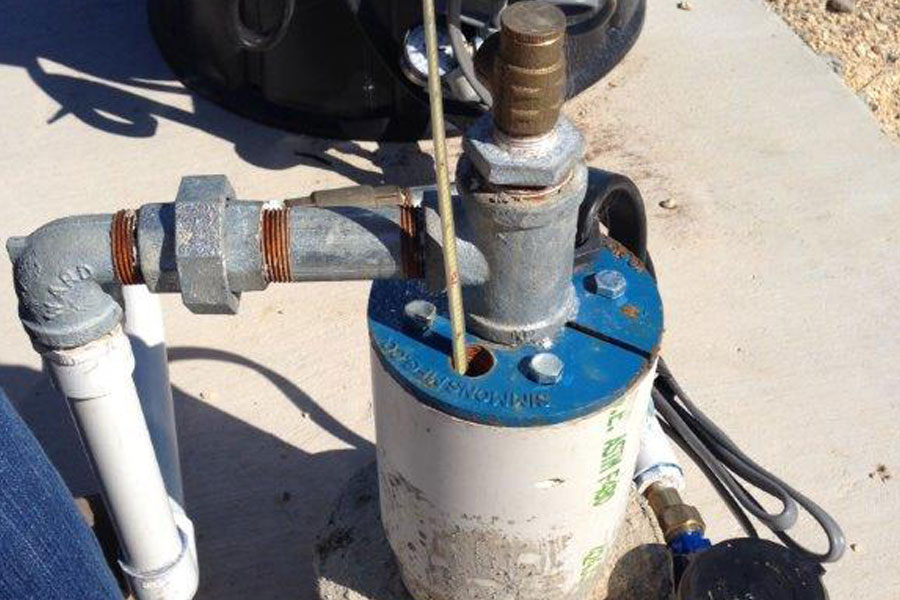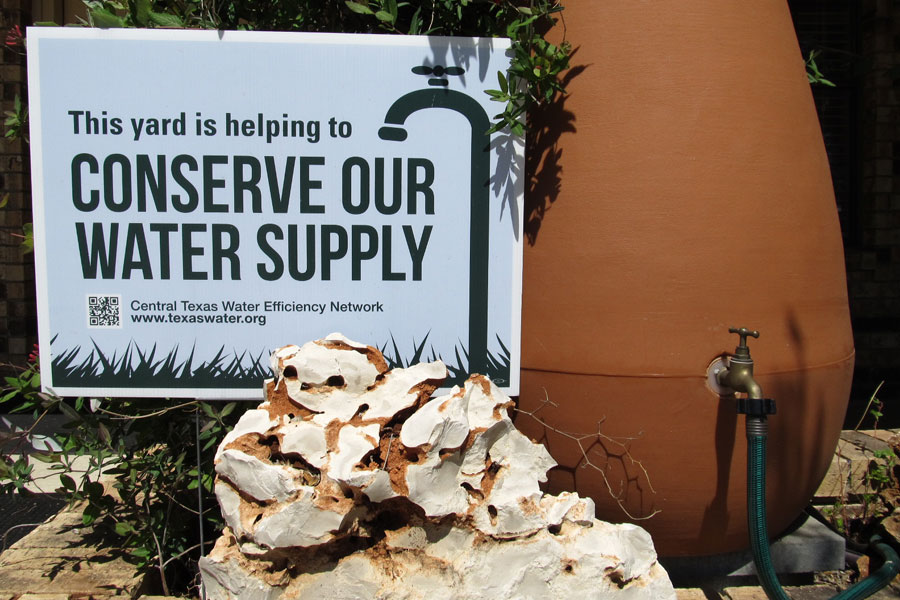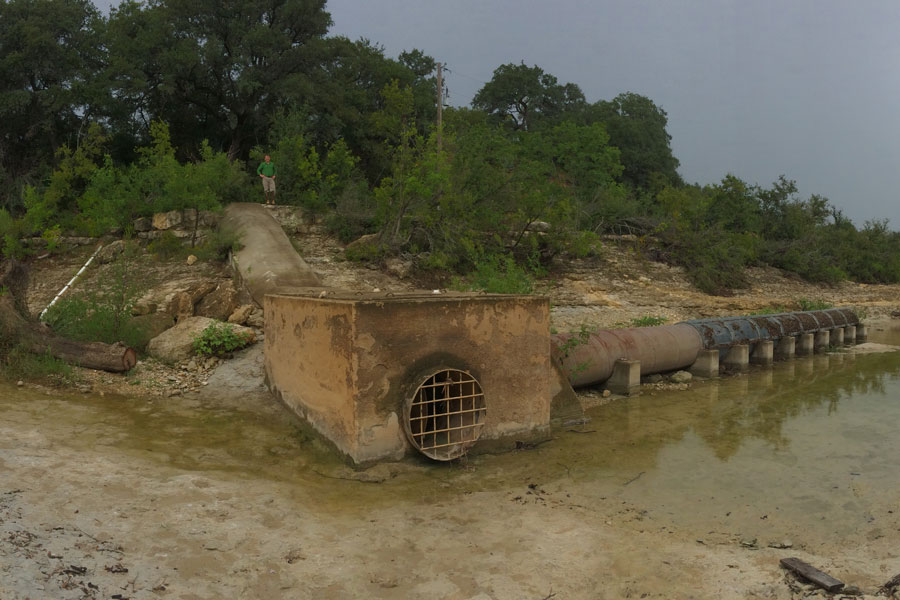Permit Types & Rules
Permit Types
If a well does not meet the exempt status criteria then it is considered a nonexempt well for which a permit is required. Generally, all nonexempt wells are required to have a meter installed and monthly meter readings are to be submitted to the District. Owners of a nonexempt well are subject to curtailments during drought restrictions and are required to have both a User Conservation Plan (UCP) and a User Drought Conservation Plan (UDCP) on file with the District. Before submitting a permit application form it, is helpful to understand what types of permits are available to you. Factors such as location, pertinent aquifer management zone, and water use type are used to determine the appropriate permit type.
There are two methods for authorizing well drilling and groundwater production on a nonexempt well, General Permit by Rule or Individual Production Permit. General Permits have an abbreviated application process and do not require public notice or public hearing. Individual Production Permits do require public notice and have more complex application checklist and approval process.
General Permits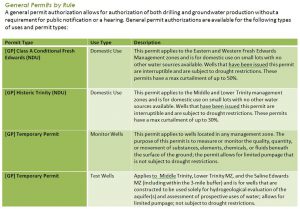
A general permit authorization allows for authorization of both drilling and groundwater production without a requirement for public notification or a hearing.
[GP] – Nonexempt Domestic Use
[GP] – Monitor Wells (Temp Permit)
[GP] – Test Wells (Temp Permit)
Individual Production Permits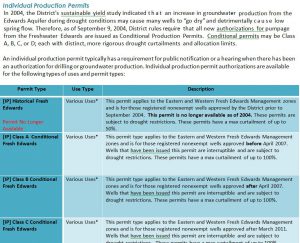
In 2004, the District’s sustainable yield study indicated that an increase in groundwater production from the Edwards Aquifer during drought conditions may cause many wells to “go dry” and detrimentally cause low spring flow. Therefore, as of September 9, 2004, District rules require that all new authorizations for pumpage from the Freshwater Edwards are issued as Conditional Production Permits. Conditional permits may be Class A, B, C, or D; each with distinct, more rigorous drought curtailments and allocation limits. An individual production permit typically has a requirement for public notification or a hearing when there has been an application for drilling or groundwater production.
[IP] – Historical Fresh Edwards
[IP] – Conditional Fresh Edwards (Class A, B, C, D)
[IP] – Historical Trinity
[IP] – Historical Saline Edwards
Management Zones
The available permits for a Nonexempt Well is determined by the well use type and the pertinent management zone that the well is located in. The pertinent management zone is determined by the well’s geographical location and the target aquifer to be produced from.
| Established Management Zones (MZs) include: | Generalized Stratigraphy | Management Zones |
| • the Western Freshwater Edwards MZ • the Eastern Freshwater Edwards MZ • the Saline Edwards MZ • the Trinity Outcrop MZ • the Middle Trinity MZ • the Lower Trinity MZ |
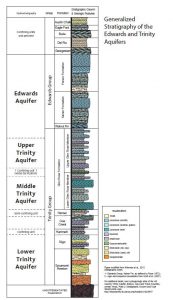 |
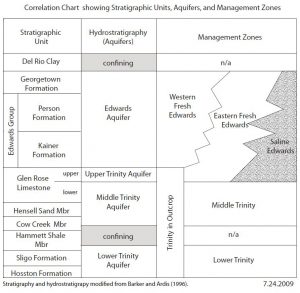 |
Rules and Regulations
The District is generally governed and controlled by a set of statutes, plans, rules, and policies, which constitutes a framework in which the District operates. For all non-exempt wells, staff tracks pumpage data through monthly submitted meter readings from permitted wells and monitors usage for compliance with the District Rules and Bylaws, Production Permits, and approved UDCPs. Please refer to the District Rules and Bylaws, Volume 1: Rules 1-4 or feel to free to contact us for further questions or information. The District’s Well Construction Standards, located in the District’s Rules and Bylaws, Volume 2: Rule 5, detail the requirements for construction, development, and completion of wells to produce from the Edwards aquifer, the Middle Trinity aquifer, or the Lower Trinity aquifer.
In certain circumstances where Permittees do not comply with District Rules, violations may occur and enforcement procedures are followed by the District, including drought management protocol, as outlined in the Enforcement Plan (Adopted 08-12-2021).
Texas Water Code, Chapter 36
Chapter 36 is the statutory authority for all groundwater conservation districts (GCDs) in Texas. Except as specifically altered by the supervening statutory authority of enabling legislation, Chapter 36 establishes how groundwater is managed and administered by GCDs.
District Enabling Legislation, SDLLC 8802
The District’s enabling legislation, now codified, addresses specific powers and limitations of the District itself, and also designates how it is to be operated and is funded.
